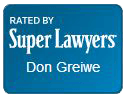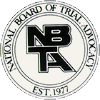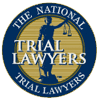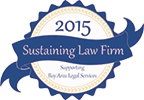News & Resources
How to Prove Fault in Distracted Driving Cases
As in any car accident injury lawsuit, a person seeking compensation for injuries suffered in a distracted driving accident must prove that the defendant’s negligence caused the accident and injuries. This means proving to a judge or jury that the driver was, in fact, distracted or looking at something other than the road ahead of them at the time of the collision. Fortunately, distracted driving by its very nature often comes with ample evidence to establish fault.
Texting is Just One Kind of Distraction
Distracted driving causes more accidents, injuries, and deaths than ever before. According to the National Highway Traffic Safety Administration reports that an estimated 3,450 Americans died in distracted driving accidents in 2016. Government statistics show that in 2017, there were 50,190 distracted driving incidents in Florida.
There is no mystery behind this increase in distracted driving. The use of cell phones, and texting, in particular, has been the leading and most publicized reason. No doubt, texting while behind the wheel is irresponsible, dangerous, and in Florida and most other states, illegal. But distracted driving has been around since the first drivers hit the road over a century ago, and other modern factors, such as GPS systems and other onboard electronics and entertainment systems, also contribute to the distracted driving epidemic.
This means that drivers can be distracted by plenty of other things beyond clutching their phones and playing with the bells and whistles on their dashboard, such as:
- Eating and drinking
- Applying makeup
- Brushing hair
- Reading
- Watching video
- Talking with other passengers
Proof That a Driver Was Distracted
The evidence needed to prove that a driver was distracted, and therefore negligent, at the time of the crash can take many forms, including:
- What you saw. You’re unlikely to see a drunk driver actually sipping from a bottle of booze or know how sleep-deprived a drowsy driver is, but distracted driving almost always can be seen. If you observed the other driver applying mascara, staring down at their phone, or eating a sandwich right before the collision, your testimony could be admitted as evidence at trial. Similarly, if you told a police officer who responded to the scene what you saw, he or she will put that in their report, which may also be admissible in court if properly prepared.
- What others saw. Similarly, if other witnesses – such as pedestrians, passengers, or other drivers – saw the accident, they may have also seen the driver’s distracted actions before the crash. If they can be identified and found, you can subpoena these witnesses for their testimony. That is one reason it is so important to get the names and contact information for any witnesses if they remain at the scene of the accident.
- Phone company records. If texting or using a phone was the alleged distraction, records reflecting the exact time and nature of the phone’s use can be obtained from the driver’s cellular carrier or from the device itself. If a driver sent or received a text message at 9:31 a.m. and the crash occurred at the same time, that’s some pretty damning evidence that the defendant was looking at something other than the road when they hit you.
Alley, Clark & Greiwe: Tampa Distracted Driving Accident Injury Attorneys
As Tampa car accident lawyers, we have seen first-hand the tragedy and loss distracted drivers can leave in their wake. If you have been a victim of such irresponsible conduct, we can help.
Please call one of Alley, Clark & Greiwe’s Tampa car wreck lawyers today at 813-222-0977 or contact us online to arrange for your free initial consultation and case evaluation. We look forward to assisting you.




















